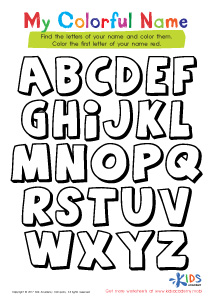Cursive writing practice Grade 3 Alphabet Worksheets
11 filtered results
-
From - To
Boost your child's handwriting skills with our "Cursive Writing Practice Grade 3 Alphabet Worksheets"! Tailored for third graders, these engaging sheets transform learning cursive into a fun and effective exercise. Your child will master the alphabet through interactive tracing and writing activities designed to improve fluent motion and letter formation. The easy-to-follow, structured approach helps build their confidence and fine motor skills, making handwriting legible and beautiful. Perfect for in-class use or supplemental home practice, our worksheets are the ideal resource for parents and teachers aiming to foster better penmanship and literacy. Explore and download now to begin your cursive journey!
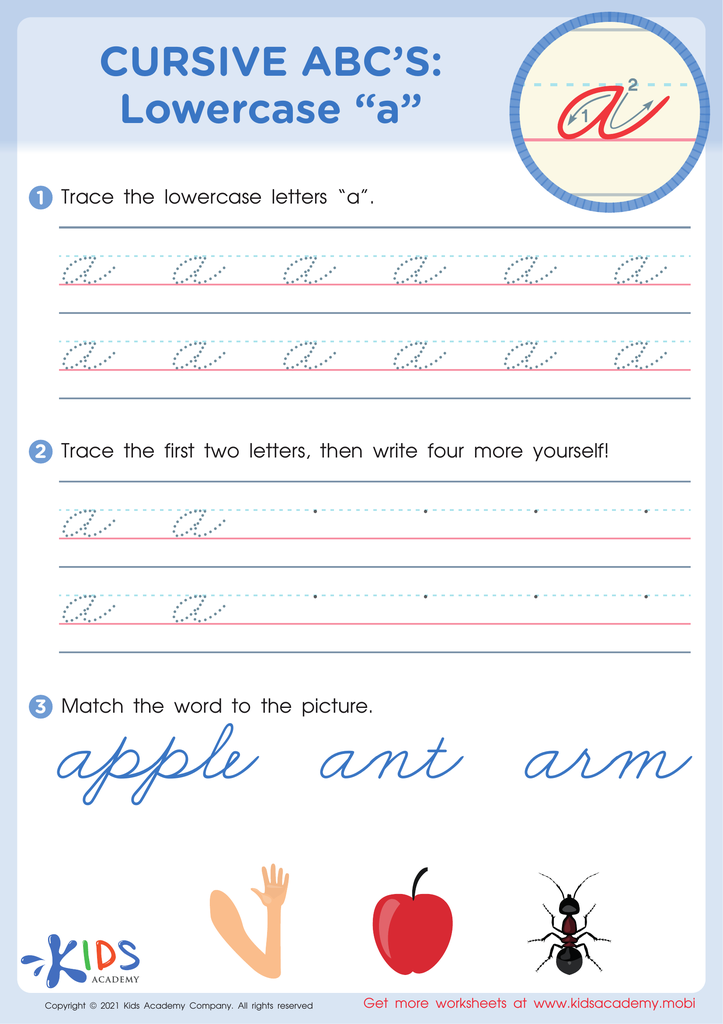

Cursive ABCs: Lowercase a
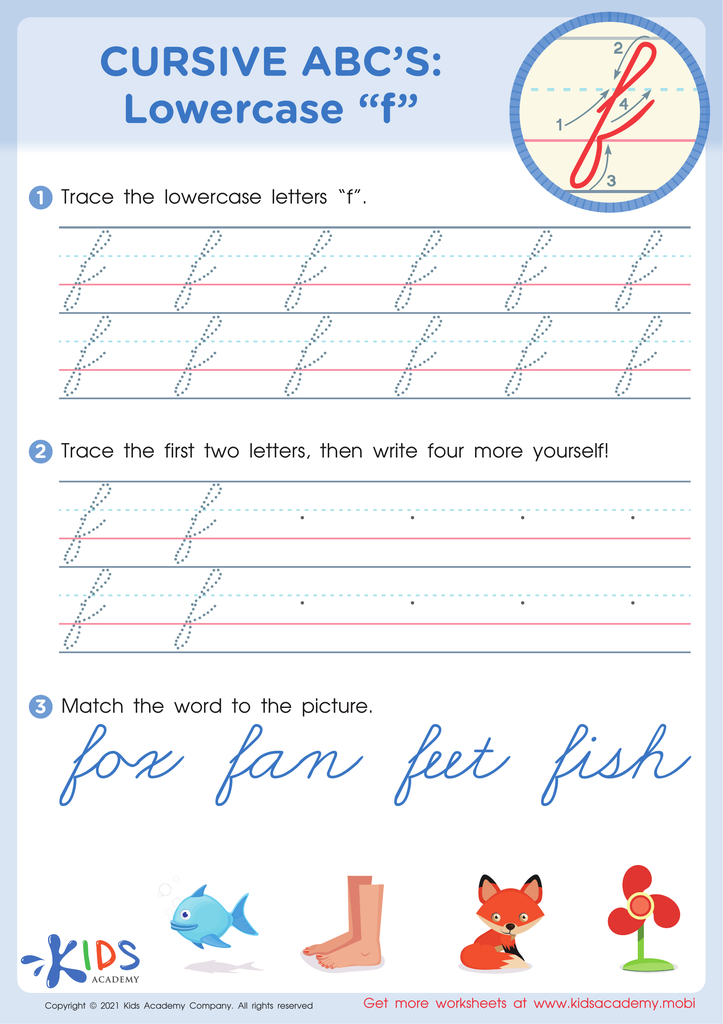

Cursive ABCs: Lowercase f
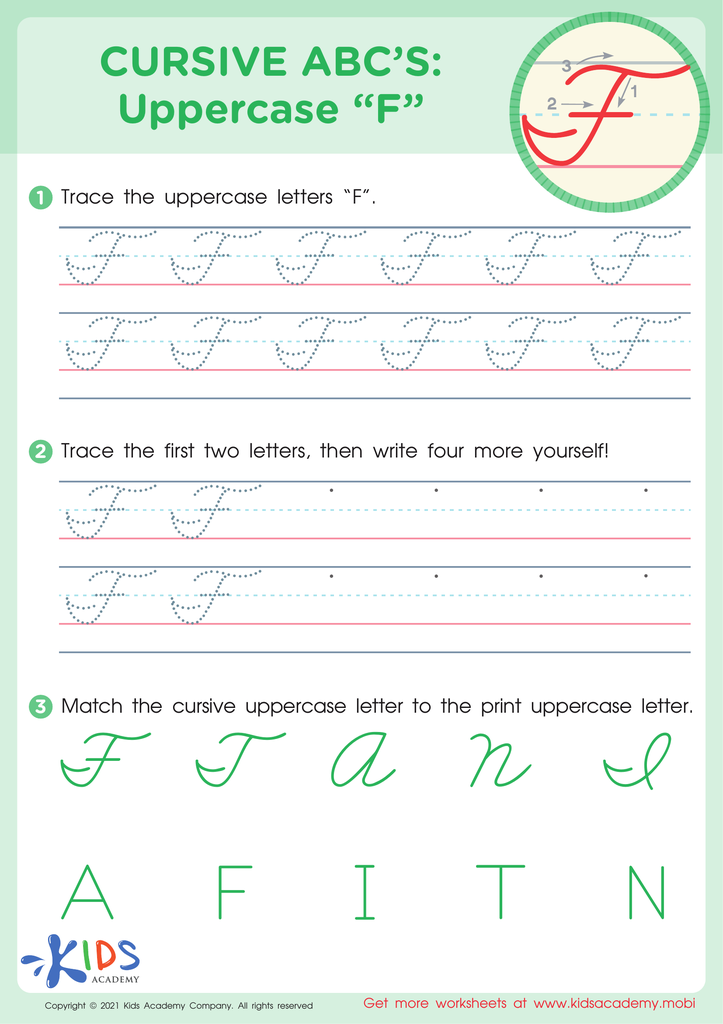

Cursive ABCs: Uppercase F
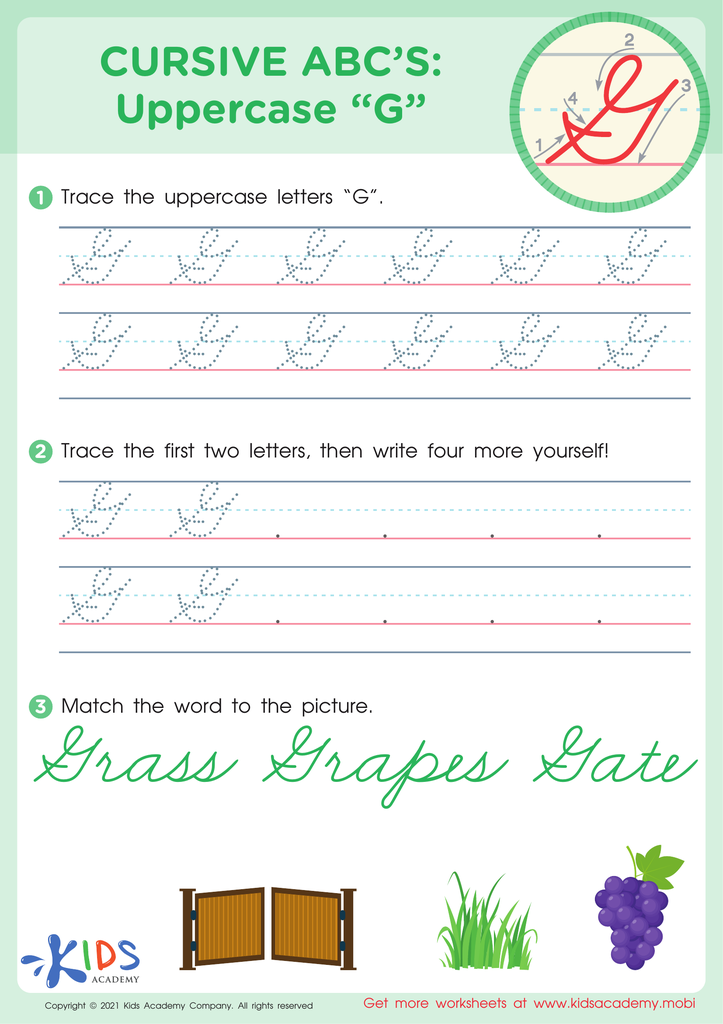

Cursive ABCs: Uppercase G
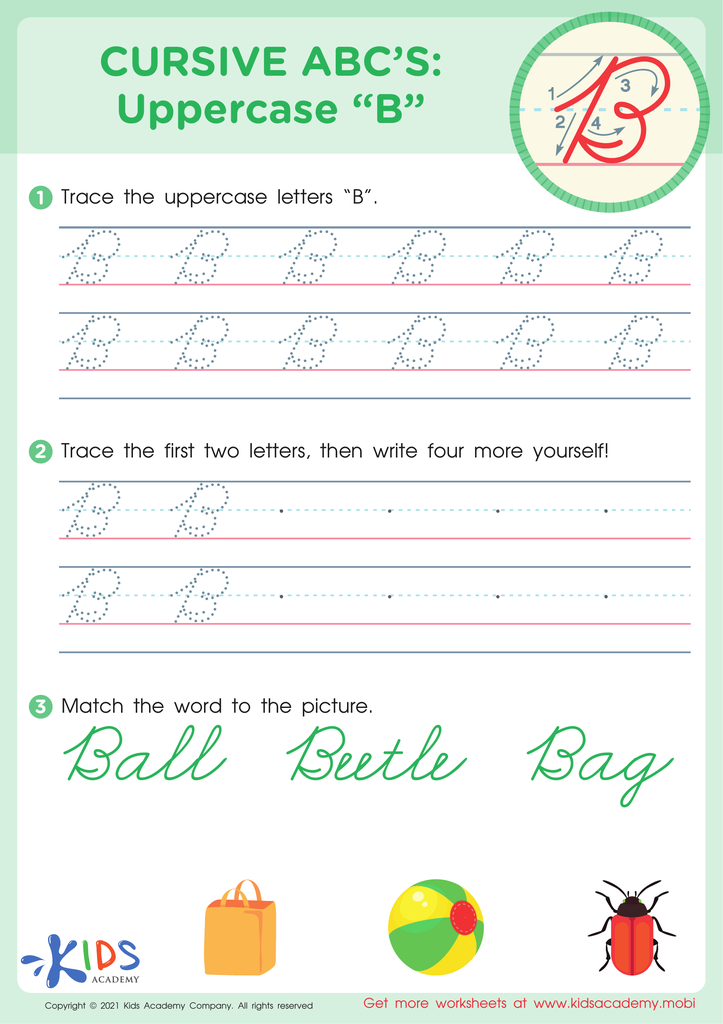

Cursive ABCs: Uppercase B
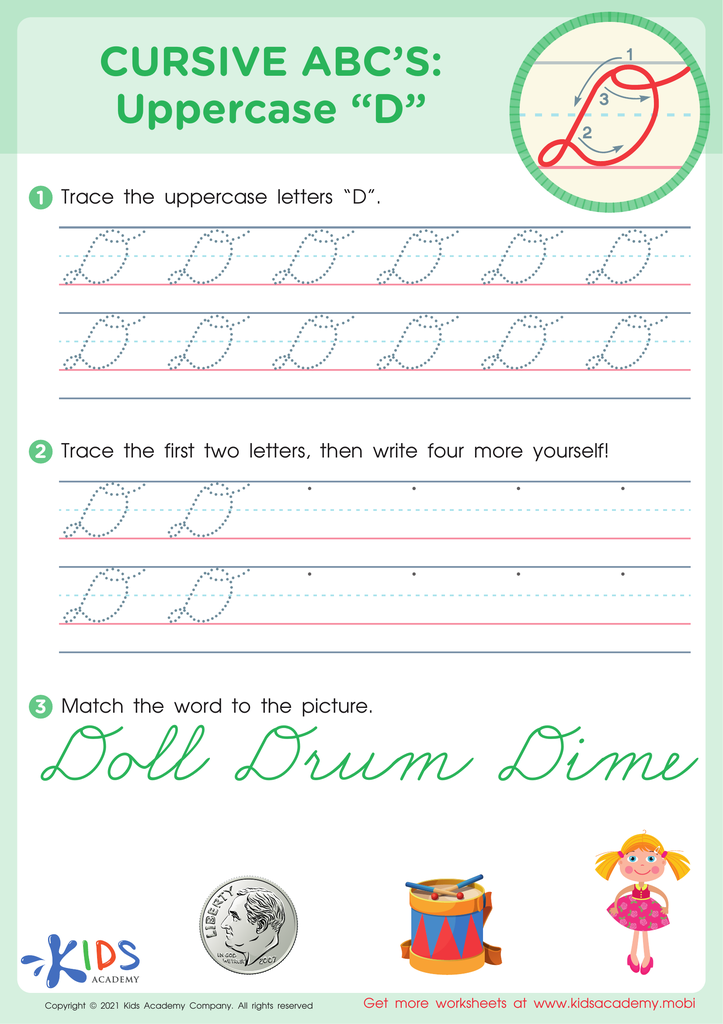

Cursive ABCs: Uppercase D
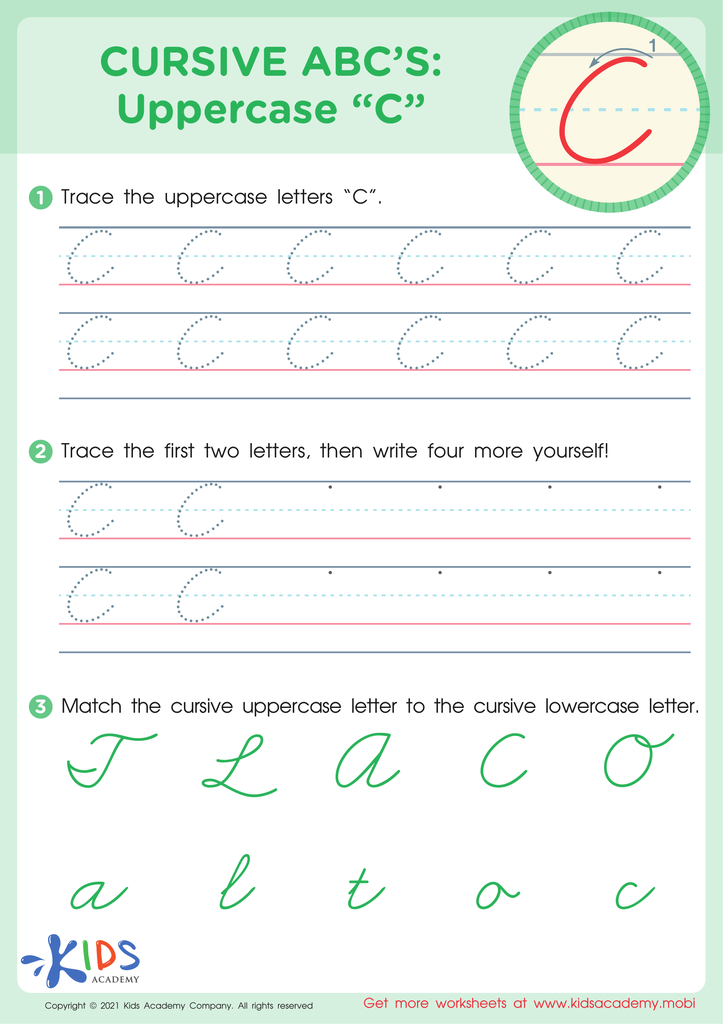

Cursive ABCs: Uppercase C
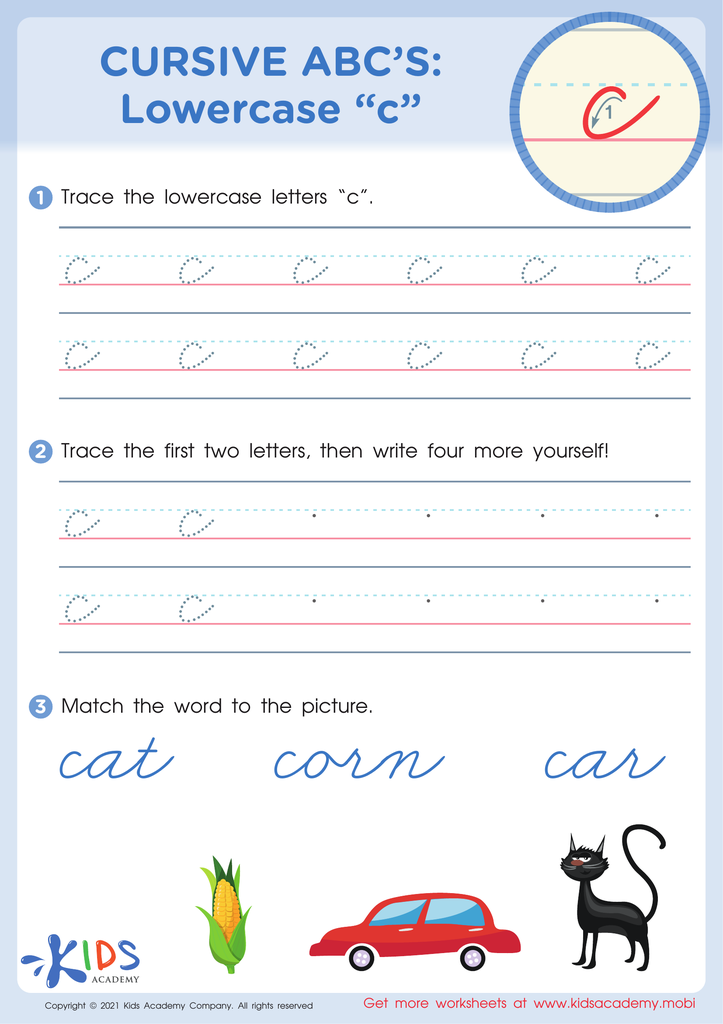

Cursive ABCs: Lowercase c


Cursive ABCs: Lowercase h


Cursive ABCs: Lowercase e
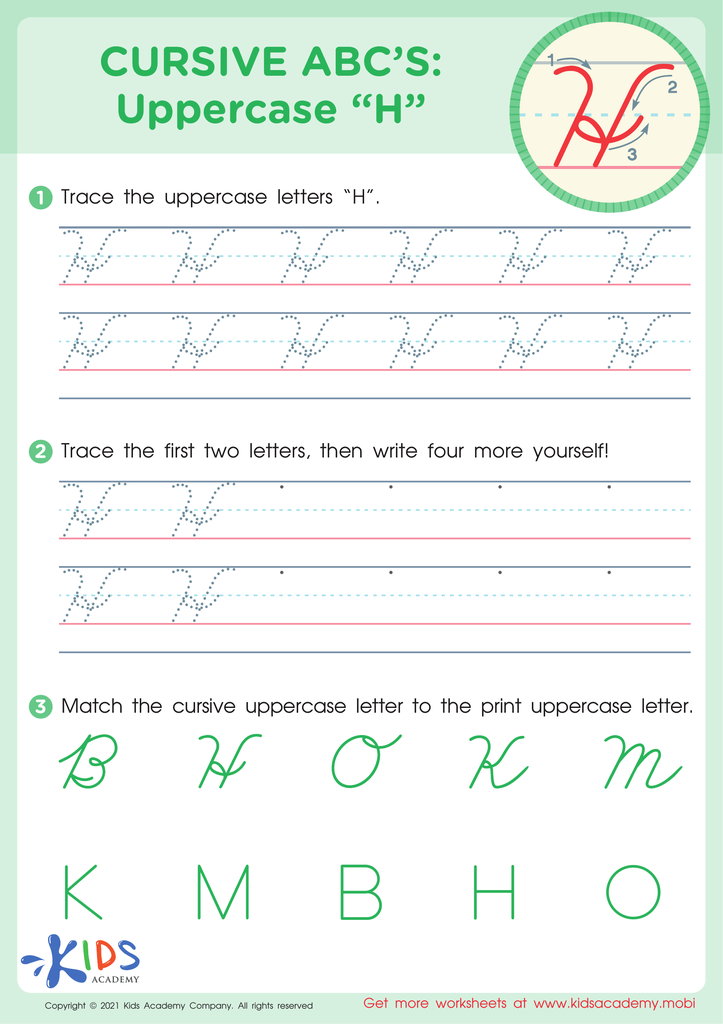

Cursive ABCs: Uppercase H
Cursive writing practice in Grade 3 is important for several reasons, benefiting both cognitive development and motor skills in children. Firstly, learning cursive writing can enhance fine motor skills, as it requires coordination and control of pencil movements. These skills are crucial not only for writing but also for tasks like typing and using tools.
Secondly, cursive writing supports cognitive development. It encourages children to use different parts of their brain simultaneously, improving their memory and learning capabilities. Studies suggest that writing in cursive can aid in better retention of information compared to typing or print writing because it engages more intricate neural pathways.
Furthermore, cursive writing is part of cultural and historical literacy. It connects students to historical documents and classical literature, fostering a connection with the past. Understanding cursive writing also means that students can read important notes and letters from older generations.
In addition to practical skills, cursive writing also promotes a sense of pride and accomplishment. Mastering cursive gives students a distinct style of writing that they can call their own, promoting self-expression and creativity.
Ultimately, cursive writing practice in Grade 3 forms a foundational skill that intertwines educational, developmental, and personal growth benefits, making it a valuable part of early education.








